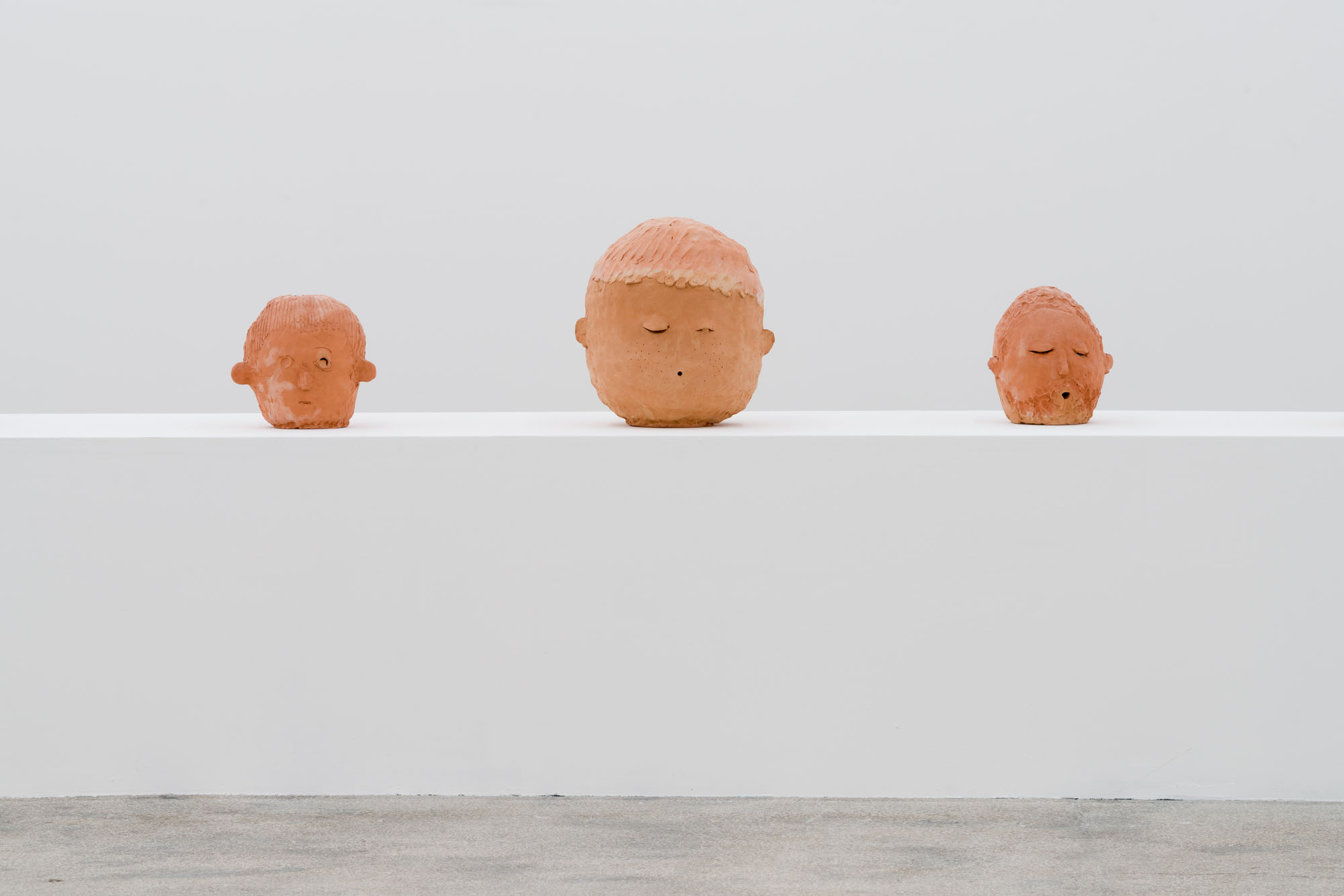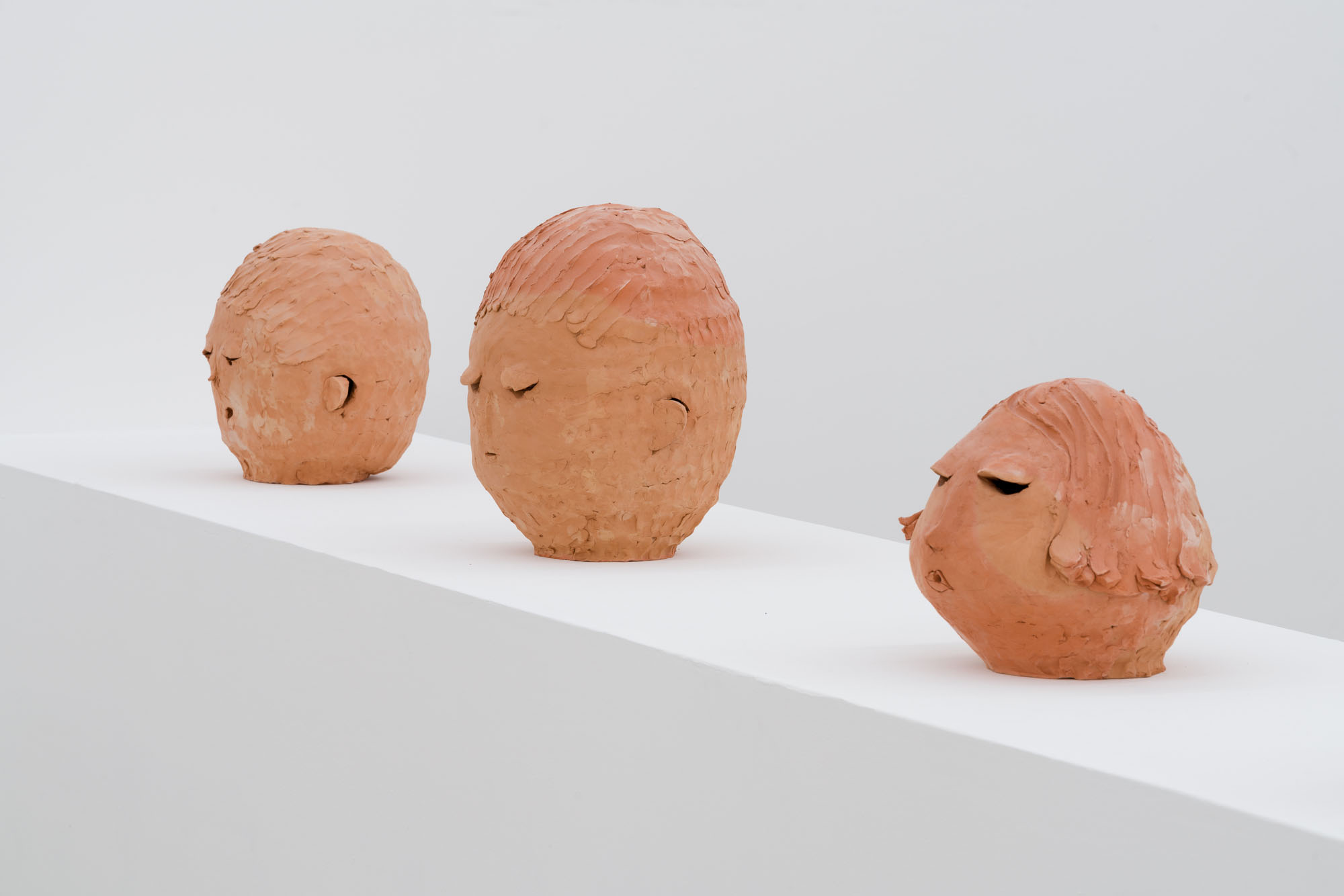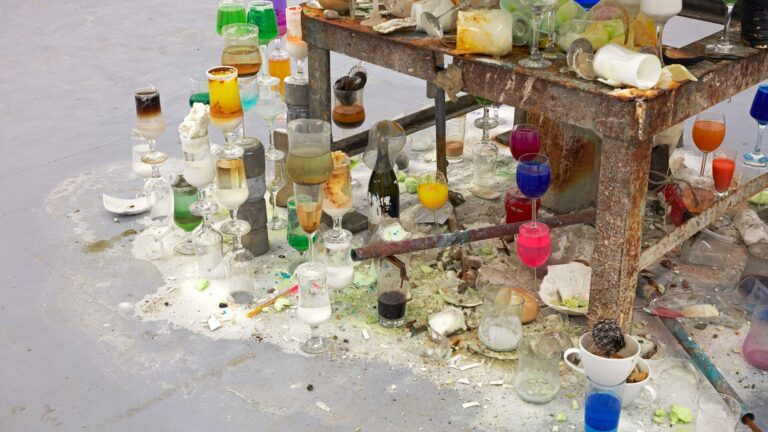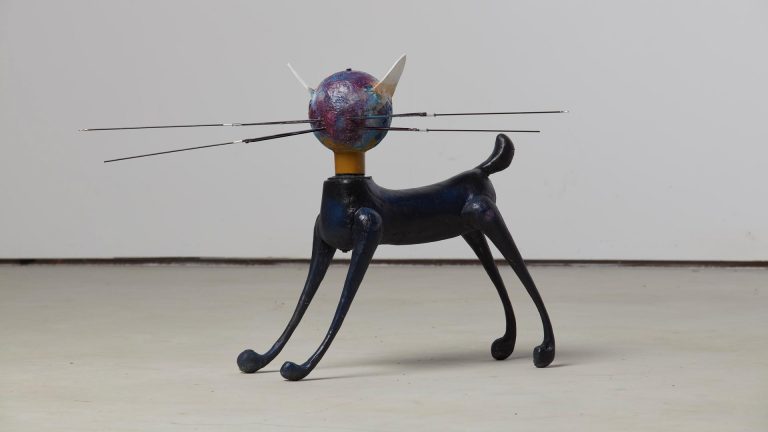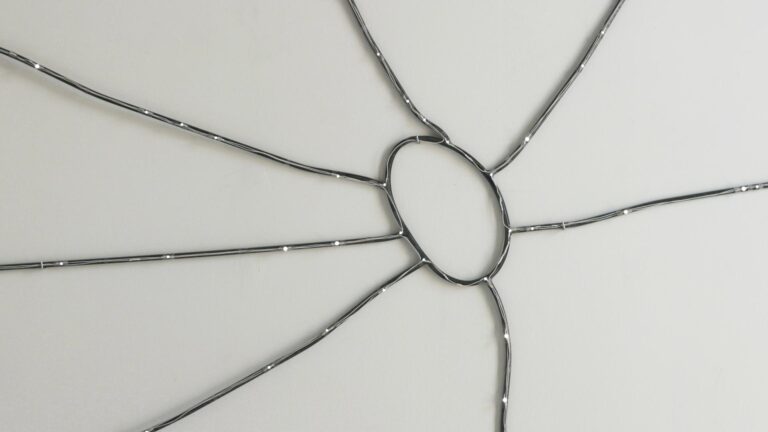Artist: Răzvan Botiș
Exhibition title: The Ceramist
Venue: SABOT, Cluj-Napoca, Romania
Date: October 5 – December 7, 2019
Photography: YAP Studio / all images copyright and courtesy of the artist and SABOT, Cluj-Napoca
The Neo-Neolithic Art of Today
by Tudor Vlădescu*
If art were to be literature, this exhibition would be a book. No pictures or drawings, just text. The kind you can go through at walking pace, stopping frequently to think: “Who does this remind me of?” And then laugh. Because this is plain satire, the moral type, that has created its own sub-genre a while ago.
Jean Delabruyere, who lived during the late 17th century, used to make fun of the fact that his own family chose the path of self-ennoblement. I imagine that Răzvan Botiș feels the same about his own work, i.e. he makes fun of himself in extenso. La Bruyere (another spelling of the same name) wrote a book of ethical generalizations that initiated a trend that lives on to this day. And Răzvan Botiș is part of that movement, whether he likes it or not.
Another set of items that “the Ceramist” hails from is the mysterious Neolithic art of Hamangia, more than eight thousand years old. “The Thinker” and “The Sitting Woman” could well have held mobile phones or driven vehicles, like their contemporary counterparts. They don’t. But this is a mere detail.
A much more macabre interpretation of this exhibition is linked to the plastered skulls of Jericho. A notch older than “The Thinker” and his sitting wife, partner, sister, just friend or – why not – recently rejected/rejectee concubine, the fallaciously prehistoric art of Jericho is based on a simple and treacherously basic technique: reconstructing facial expressions based on the inherently smiling bones of the recently deceased. I am leading on this path to make a point: these are not emoticons. Răzvan Botiș’s characters are dead serious. Neolithic or Post-Industrial, the human faces or thoughts are equally expressive. And their favourite past-time, apart from that of being eventually dead, was that of thinking and showing it too.
It’s your turn to try, unless it’s too late.
* Tudor Vlădescu (Ph.D, University of Bucharest) is a philologist specialized in 20th century propaganda novels and history of totalitarianism. Since 2003, he has been lecturing on history and culture of Europe, fieldwork methodology in cultural anthropology, history of literature, and, more recently, design history for the University of Bucharest in Romania, University of San Jose in Macau, Culinary Institute of America in Singapore, and Glasgow School of Arts in Singapore.






